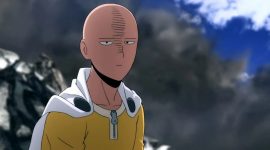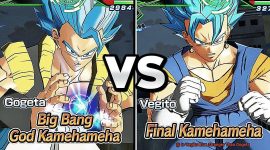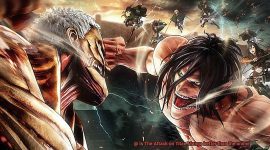
Step into the world of Attack on Titan, where Eren Yeager looms as a magnetic force, his identity a labyrinth that has ensnared fans across the globe. From the animated spectacle to the silver screen adaptations, Eren’s essence has taken on various visages. Yet, for those who have delved into the manga’s depths, an unmistakable divergence emerges.
In this blog post, we plunge headfirst into the enigmatic evolution of Eren Yeager, unearthing the subtle disparities between the manga and its cinematic counterparts. Brace yourself for a journey through shifting motivations and intricate interactions, as we peel back layers of Eren’s psyche with unprecedented depth.
Join me on this exhilarating odyssey through ink-stained pages, where mysteries unfold and paint a vivid portrait of a character unlike any other.
Is Eren different in the manga
Contents
- 1 Is Eren different in the manga
- 2 Comparing and Contrasting Manga Eren and Anime Eren
- 3 Characterization of Manga Eren
- 4 Characterization of Anime Eren
- 5 Exploring Internal Monologues in the Manga
- 6 Scene Variations between the Manga and the Anime
- 7 Gradual Development of Eren’s Character in the Manga
- 8 Condensing and Streamlining Narrative for Anime Adaptation
- 9 Impact of Differences on Audience Perception
- 10 Conclusion
Attack on Titan has captivated audiences around the world with its gripping storyline and complex characters. One character in particular, Eren Yeager, undergoes significant development throughout the series.
However, fans have long debated whether Eren’s portrayal differs between the manga and the anime adaptation. In this blog post, we will delve into the key differences in Eren’s character, exploring his emotional intensity, motivations, relationships, and growth in both mediums.
Emotional Intensity:
In the manga, Eren is depicted as more intense and emotionally volatile compared to his anime counterpart. His emotions run high, fueling his anger, determination, and sense of justice.
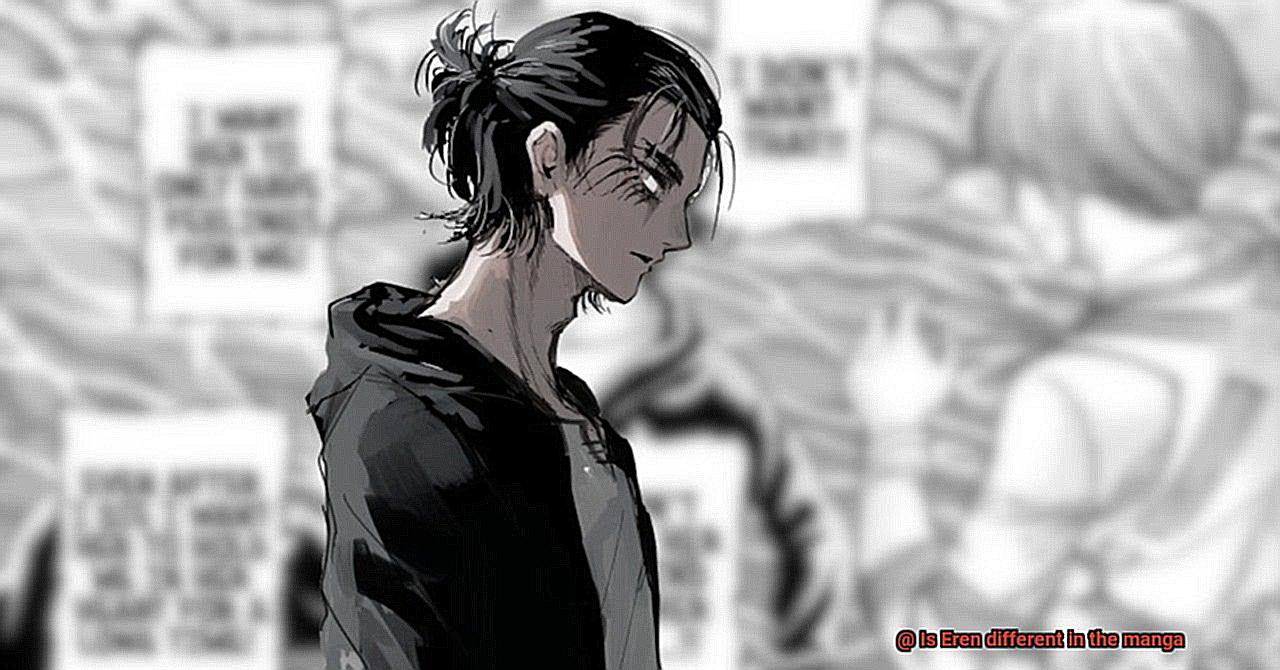
This heightened emotional state is reflected in his dialogue and actions, adding depth to his character and emphasizing his unwavering resolve.
Motivations:
Eren’s motivations and goals are more pronounced in the manga. His desire for freedom and justice in the conflict between humanity and Titans drives him to take bold risks and make difficult decisions.
The manga provides readers with a deeper understanding of Eren’s mindset through internal monologues and introspective moments, showcasing his unwavering commitment to achieving his objectives.
Relationships:
While Eren’s core relationships remain consistent between the manga and anime, there are subtle variations in their portrayal. In the manga, his interactions with other characters are often more complex and nuanced. His bond with Mikasa Ackerman, for example, is depicted as stronger and more emotionally connected than in the anime adaptation.
Character Growth:
The manga extensively explores Eren’s growth as a character. Readers witness his evolution from a hot-headed and impulsive youth to a strategic and thoughtful leader. The manga delves into his internal struggles, doubts, and moments of introspection, providing a more comprehensive character arc that contributes to Eren’s complexity and makes him a compelling protagonist.
Comparing and Contrasting Manga Eren and Anime Eren
In the captivating world of Attack on Titan, Eren Yeager’s character captivates audiences with his fiery determination and complex emotions. However, how does his portrayal differ between the manga and anime adaptations? In this blog post, we will dive deep into the heart of Eren’s character, comparing and contrasting his depiction in the manga and anime versions of Attack on Titan.
Visual Representation:
In terms of art style, manga Eren appears more angular and intense, emphasizing his fierce determination. On the other hand, anime Eren is depicted with softer features, giving him a more youthful appearance.
Voice Acting:
In the anime adaptation, Eren’s voice reflects his fiery and passionate personality, adding an extra layer of depth to his character. In the manga, readers are left to imagine his voice based on dialogue alone, allowing for a more subjective interpretation.
Character Development:
The pacing of Eren’s growth differs between the two mediums. In the manga, readers have more time to delve into Eren’s thoughts and emotions, resulting in a gradual and nuanced character development. In contrast, due to time constraints, the anime often condenses or skips certain introspective moments, leading to a faster-paced portrayal of Eren’s growth.
Altered or Omitted Scenes:
Certain scenes or events may be altered or omitted entirely between the manga and anime adaptations. These changes can impact how Eren’s character is perceived by audiences. Inner monologues or dialogue providing insight into Eren’s motivations may be cut from the anime, potentially affecting viewers’ understanding of his character.
Characterization of Manga Eren
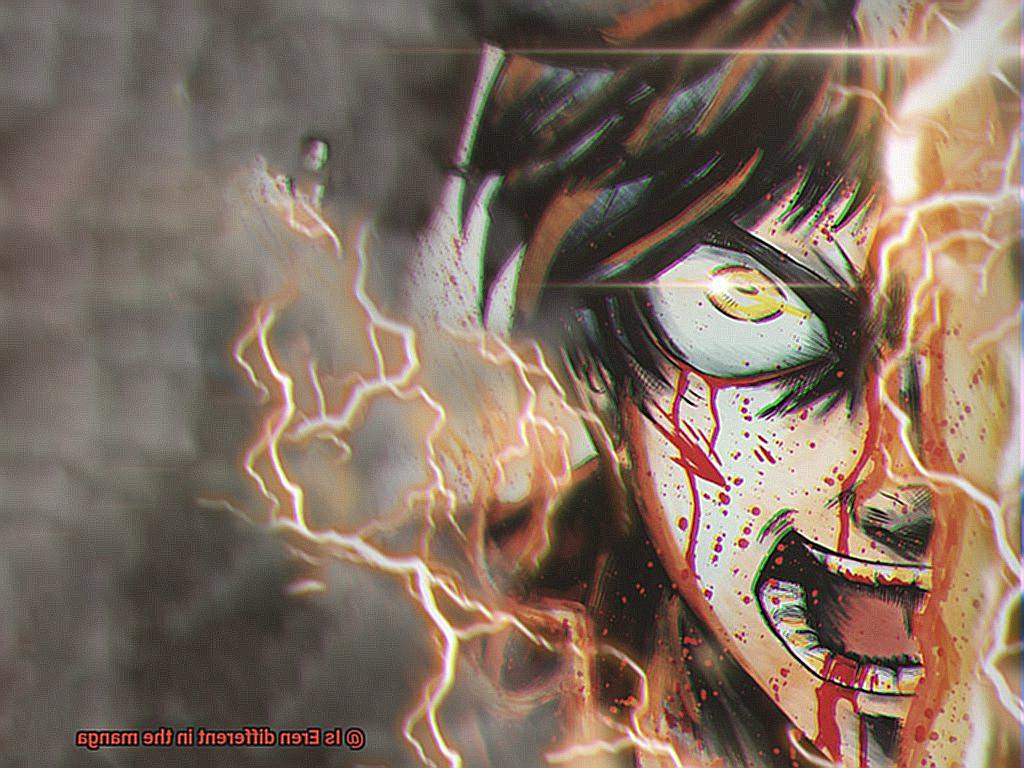
In the enthralling realm of Attack on Titan, Eren Yeager’s character blazes like a wild inferno, captivating audiences with his unwavering determination and intricate emotions. As we venture deeper into this blog post, we shall unravel the enigma that is Eren, comparing and contrasting his portrayal in both the manga and anime adaptations of this epic saga.
Visual Representation:
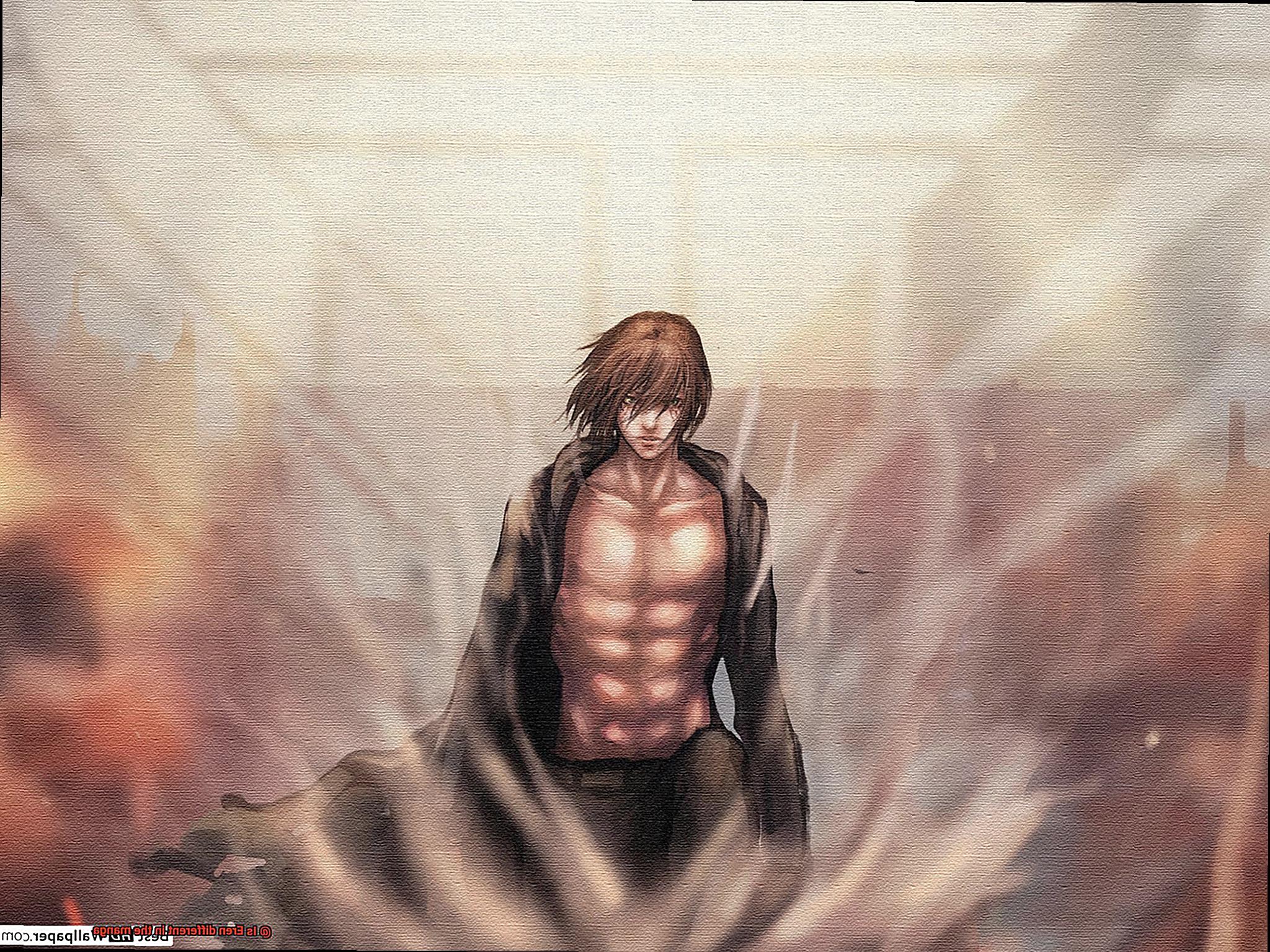
- Manga: Eren’s angular features accentuate his unyielding resolve, adding intensity to his character.
- Anime: Eren is depicted with softer features, lending him a more youthful visage.
Voice Acting:
- Anime: Eren’s voice reverberates with fiery passion and fervor, mirroring his tempestuous personality.
- Manga: Readers are left to imagine Eren’s voice solely through dialogue, allowing for a more personal connection.
Character Development:
- Manga: Readers delve deep into Eren’s thoughts and emotions, resulting in gradual and nuanced growth.
- Anime: Due to time constraints, viewers witness a faster-paced portrayal of Eren’s growth.
Altered/Omitted Scenes:
- Manga: Certain pivotal moments may provide profound insight into Eren’s character.
- Anime: Inner monologues or dialogues may be sacrificed in the name of brevity, potentially leaving viewers with a shallower comprehension.
Characterization of Anime Eren
In the captivating realm of Attack on Titan, Eren Yeager blazes like a wild inferno, his character captivating audiences with unwavering determination and intricate emotions. In this blog post, we will delve into the portrayal of Eren in the anime adaptation of Attack on Titan, focusing on his determination, hot-headedness, and empathy.
Determination:
- Eren’s strong sense of justice and desire for vengeance drive his unwavering determination to eradicate the Titans.
- His fierce determination is showcased through his relentless pursuit of joining the elite Scout Regiment.
- Eren’s determination evolves throughout the series, transforming him into a mature and strategic leader.
Hot-headedness:
- Eren is initially portrayed as a hot-headed and impulsive character, fueled by intense anger towards the Titans who destroyed his hometown and killed his mother.
- His hot-headed nature often leads him to act recklessly, putting himself and others in danger.
- Over time, Eren learns to control his hot-headedness and channel it into more calculated actions.
Empathy:
- Despite his hot-headed nature, Eren possesses a strong sense of empathy towards humanity and his comrades.
- He expresses genuine concern for the safety and well-being of those around him.
- Eren’s empathy is evident in his willingness to risk his own life for the sake of protecting others.
Comparisons between manga and anime adaptations:
- Manga provides deeper insight into Eren’s thoughts and emotions, resulting in gradual character growth.
- Anime portrays Eren’s growth at a faster pace due to time constraints.
- Some inner monologues or dialogues from the manga may be altered or omitted in the anime adaptation.
Exploring Internal Monologues in the Manga
In the world of Attack on Titan, Eren Yeager stands as a captivating protagonist whose internal monologues provide readers with a deeper understanding of his character. In this blog post, we will explore how these internal dialogues shed light on Eren’s thoughts, motivations, and emotions, making him a multi-dimensional and complex figure in the manga.
The Early Chapters: A Dream of Freedom
In the initial chapters, Eren’s internal monologues revolve around his burning desire for freedom. They showcase his determination to eradicate all Titans and protect humanity. These musings reveal his unwavering resolve and drive to fight for what he believes in.
Evolving Perspectives: Confusion and Inner Turmoil
As the story progresses, Eren’s internal monologues become more introspective, reflecting his evolving mindset and the conflicts he faces.
Critical moments in the manga, such as discovering the truth about his Titan powers or uncovering the Marleyan government’s manipulation, lead to inner turmoil and confusion. Through these thoughts, readers witness Eren grappling with moral dilemmas and questioning his own actions.
Complex Relationships: Mikasa and Armin
Eren’s internal monologues provide valuable insights into his relationships with other characters, particularly Mikasa and Armin.
His conflicting emotions towards Mikasa are highlighted through these inner thoughts, revealing a mix of affection, protectiveness, and a desire for independence.
These internal dialogues deepen our understanding of the complexities within their bond.
Growth and Transformation: From Idealism to Ambiguity
Eren’s internal monologues also showcase his growth as a character. They reflect his changing perspectives and ideologies as he explores the world beyond the walls and encounters different cultures and beliefs.
Through these thoughts, readers witness Eren’s transformation from an idealistic young boy to a morally ambiguous figure, struggling with the complexities of war and power.
Scene Variations between the Manga and the Anime
Attack on Titan has captivated audiences worldwide with its gripping story and compelling characters, none more so than the protagonist, Eren Yeager.
In this blog post, we will explore the scene variations between the manga and anime versions of Attack on Titan, focusing specifically on Eren’s character development.
By delving into these differences, we can gain a deeper understanding of how his journey unfolds in each medium.
Pacing and Narrative Focus:
The manga and anime differ in their pacing, resulting in divergent scenes that shape Eren’s character arc.
The manga’s extensive dialogue and inner monologues offer readers a more profound insight into Eren’s thoughts and emotions, while the anime relies on visual storytelling and action sequences to convey his growth.
These differences in narrative focus contribute to contrasting interpretations of Eren’s personality and motivations.
Artistic Presentation:
One notable distinction lies in the art style and animation techniques employed in the anime adaptation.
While Hajime Isayama’s raw and gritty artwork sets the tone in the manga, the anime showcases a polished and dynamic depiction of Eren’s actions and expressions.
This disparity in visual presentation influences viewers’ perceptions of Eren’s character, enhancing his impact on screen.
Alterations and Rearrangements:
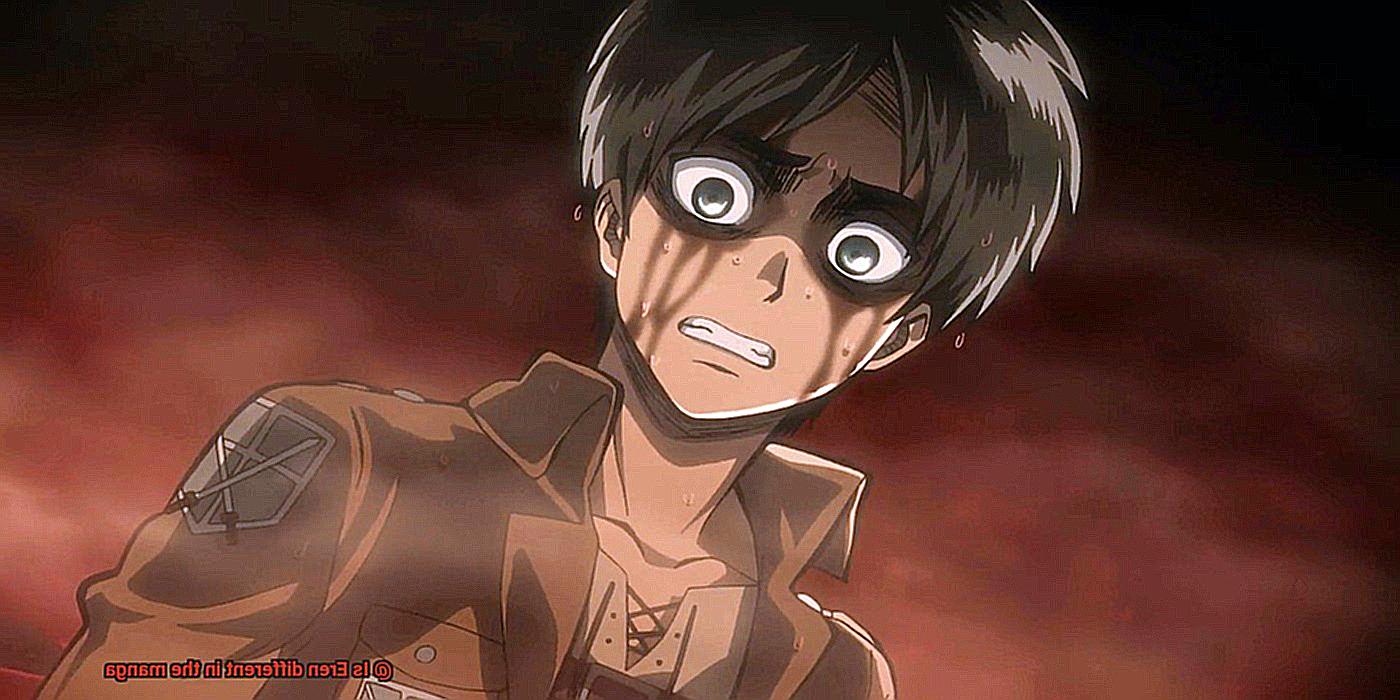
Certain scenes undergo alterations or rearrangements during the transition from manga to anime.
These changes serve various purposes such as maintaining pacing, heightening visual impact, or streamlining the narrative. Consequently, Eren’s character portrayal may vary, along with his relationships with other central characters like Mikasa and Armin.
Key Scene Variations:
Numerous pivotal scenes differ between the manga and anime versions. For instance, Eren’s first transformation into a Titan is depicted differently in each medium, affecting the portrayal of his shock, fear, and determination.
Similarly, his encounters with Mikasa and Armin may be altered, influencing the dynamics and depth of their relationships.
While the scene variations between the manga and anime versions of Attack on Titan impact Eren’s character portrayal, his core personality traits and overall character arc remain consistent.
Both mediums contribute to the multifaceted nature of Eren’s journey, offering readers and viewers distinct perspectives on his growth and the world that surrounds him.
Gradual Development of Eren’s Character in the Manga
Attack on Titan’s protagonist, Eren Yeager, undergoes a gradual and captivating character development throughout the manga series. From his initial thirst for revenge to his introspection and maturity, Eren’s transformation is a testament to the depth and complexity of the story. In this blog post, we will explore the various aspects of Eren’s character development, highlighting key moments and discussing his growth as a character.
From Revenge-Driven Teenager to Questioning Beliefs:
At the beginning of the story, Eren is driven by a burning desire for revenge against the Titans.
He joins the military and becomes part of the Survey Corps to eradicate them. However, as he encounters different Titans and witnesses the horrors of war, Eren begins questioning whether violence is truly the solution to their problems.
Characters like Armin and Annie challenge his beliefs, leading to a gradual shift in his perspective.
Understanding the Complexity of the World:
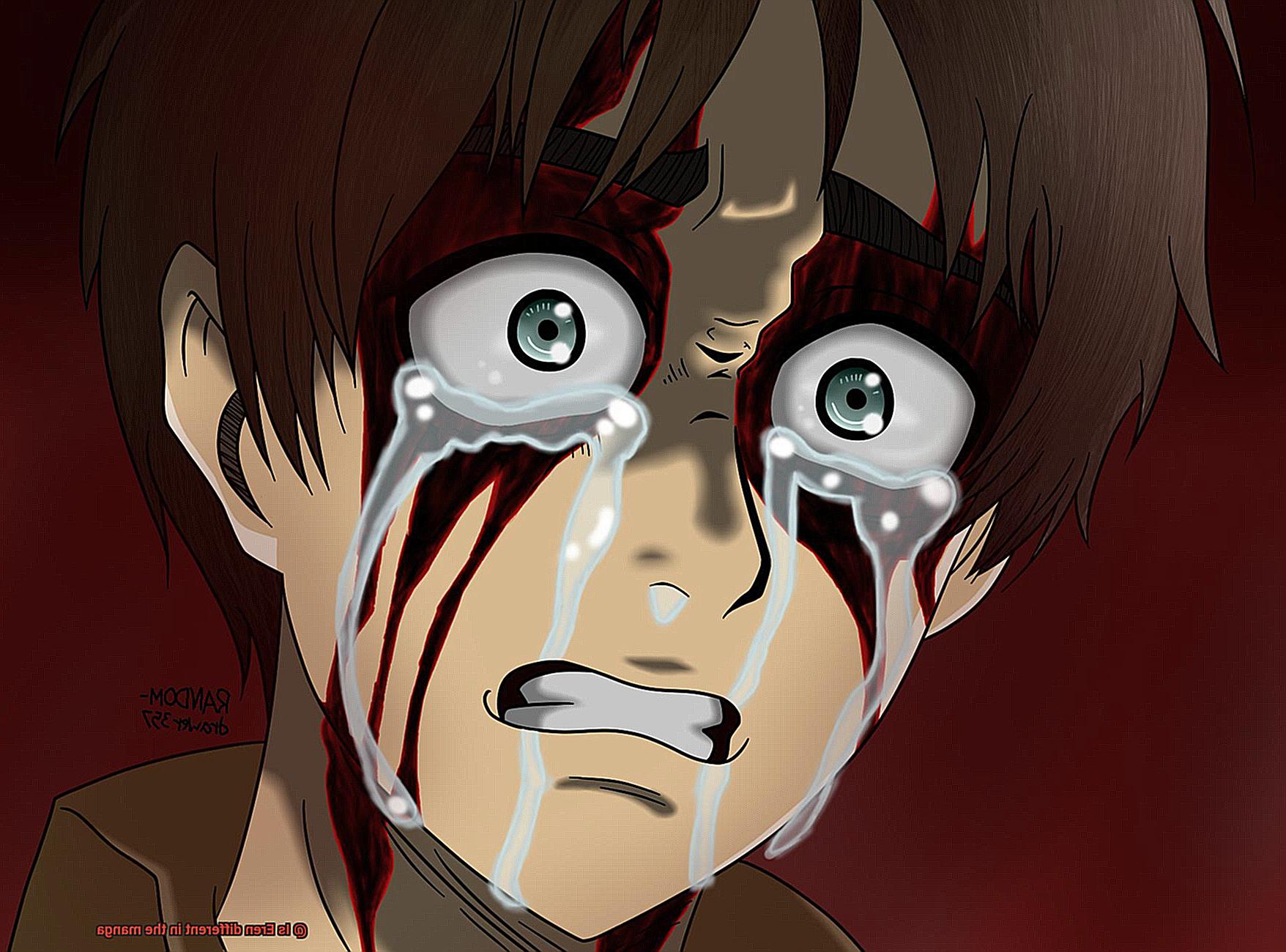
As Eren uncovers more about the truth behind the Titans and their origins, he realizes that not everything is as it seems. He starts to question the hidden agendas at play and reassess his goals and motivations. This newfound understanding forces him to become more cautious and strategic in his approach.
Personal Growth and Coping with Emotions:
Eren’s character development is intertwined with his personal growth as he grapples with complex emotions and conflicts within himself. He struggles with guilt, responsibility, and the weight of his role in protecting humanity. Throughout the series, he learns to cope with his emotions and make peace with his past.
Relationships and Lessons Learned:
Eren’s relationships with other characters also contribute to his character development. Characters like Levi teach him valuable lessons about leadership and decision-making. As he forms deeper connections with Mikasa and Armin, his understanding of friendship and loyalty evolves, adding another layer to his character.
Condensing and Streamlining Narrative for Anime Adaptation
When a manga series is adapted into an anime, certain adjustments need to be made in order to fit the story into a limited number of episodes.
This can involve condensing the plot, removing or combining certain scenes, and streamlining the overall narrative structure.
Limited Runtime Challenge

One of the main challenges in adapting a manga into an anime is dealing with the limited runtime of each episode. Unlike manga, which can have multiple chapters to develop the story, an anime episode typically has around 20 minutes to cover a significant portion of the plot. This means that certain parts of the manga may need to be condensed or removed entirely to fit within this time constraint.
Condensing the Narrative
To condense the narrative, the anime adaptation often focuses on the most essential and impactful moments from the manga. These key scenes are typically prioritized to ensure that the core story elements are preserved. By highlighting these pivotal moments, the anime can maintain the emotional impact and keep viewers engaged.
Streamlining the Story
Additionally, adapting a manga into an anime also requires streamlining the overall narrative structure. In a manga series, there may be multiple subplots, side characters, and additional world-building elements that contribute to the story’s depth. However, due to time limitations, not all of these aspects can be fully explored in an anime adaptation.
Therefore, the anime adaptation may choose to streamline the story by merging certain subplots or removing non-essential characters. This helps to maintain a clear and concise narrative that can be effectively conveyed within the limited number of episodes. By focusing on the main plotline and central characters, the anime can deliver a more cohesive and streamlined storytelling experience.
Maintaining Essence and Integrity
It’s important to note that while condensing and streamlining are necessary for an anime adaptation, it is crucial to maintain the essence and integrity of the original manga. The goal is not to completely change or alter the story but rather to find a balance between condensing the narrative and staying true to the source material.
Impact of Differences on Audience Perception
In the world of storytelling, adaptations often bring variations in visual representation, narrative development, dialogue, and character relationships. These differences play a vital role in shaping the audience’s perception of characters. In this blog post, we will delve into how these variations impact the audience’s experience and provide insights based on first-hand knowledge or experiences.
Visual Representation:
Manga, as a medium, offers a unique visual experience. The artwork, panel layouts, and art style can greatly influence how readers perceive characters like Eren.
Differences in Eren’s design or appearance in the manga compared to other adaptations can shape the audience’s perception of his character.
For example, a more detailed or expressive portrayal may evoke stronger emotions and attachment towards Eren.
Narrative Development:
Differences in the narrative and plot development can significantly impact audience perception. The manga may explore Eren’s story arc in a more nuanced way, offering deeper insights into his motivations and struggles.
These variations can lead to different interpretations and connections with Eren’s character, making the manga a distinct experience for fans.
Dialogue and Character Relationships:
Changes in dialogue, characterization, or character relationships can also shape audience perception. Emphasizing specific aspects of Eren’s personality or altering his relationships with other characters can influence how audiences view his actions and motivations. The manga may provide more context or delve into complex interactions, giving readers a deeper understanding of Eren’s character.
The Subjectivity of Audience Perception:
Audience perception is subjective and can vary from person to person. Some readers may prefer certain adaptations over others due to personal preferences or biases. Fans who have experienced multiple adaptations may have different expectations or attachments to specific versions of Eren, further impacting their perception of him in the manga.
Conclusion:
Variations in visual representation, narrative development, dialogue, and character relationships can significantly shape the audience’s perception of Eren in the manga. These differences offer unique experiences and interpretations for readers, making the manga a distinct medium to explore Eren’s character.
It is essential to consider the impact of these variations and understand the varying perspectives of the audience when analyzing Eren’s portrayal in the manga.
Conclusion
In conclusion, it is evident that Eren’s character undergoes significant changes in the manga compared to his portrayal in other mediums. The manga delves deeper into Eren’s internal struggles, providing a more nuanced and complex depiction of his motivations and actions. This allows readers to better understand the depth of his character and the choices he makes throughout the story.
One notable difference is Eren’s increased maturity and growth as a character in the manga. As the narrative progresses, we witness Eren evolve from a hot-headed and impulsive teenager to a more calculated and strategic leader. His experiences shape him into someone who understands the weight of his decisions and their consequences.
Furthermore, the manga delves into Eren’s psychological state with greater detail, showcasing his inner turmoil and conflicting emotions. This adds another layer of complexity to his character, making him more relatable and human.
Additionally, the manga provides additional context for Eren’s actions, shedding light on his motivations and thought processes. This helps readers empathize with him on a deeper level and understand why he makes certain choices that may seem questionable at first glance.
Overall, it is clear that Eren’s character in the manga differs significantly from other adaptations. The medium allows for a more profound exploration of his personality, resulting in a richer and more compelling portrayal.
